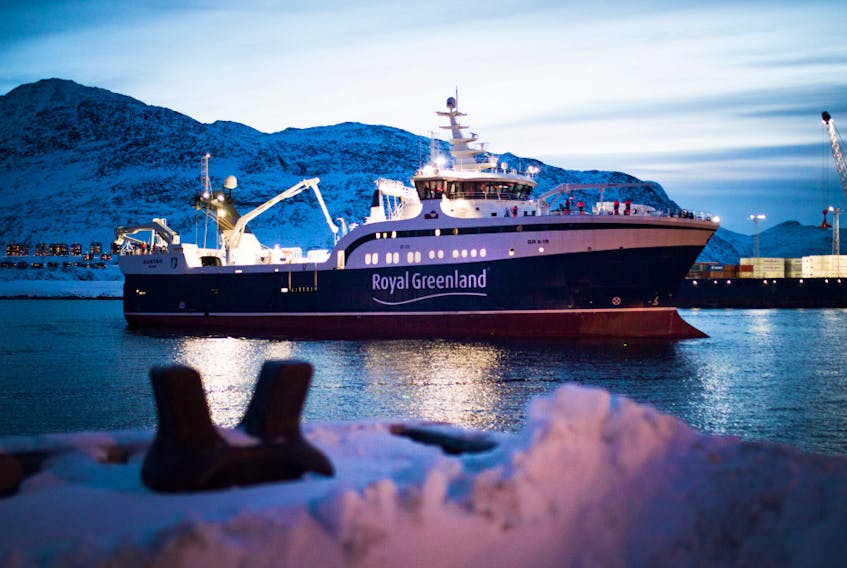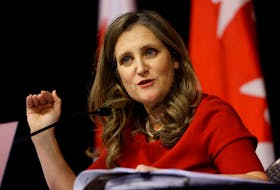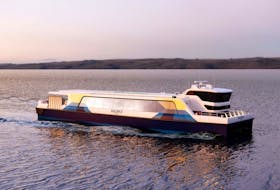Sometime in the past few weeks, the minister of Fisheries, Forestry and Agriculture signed off on the transfer of the processing licenses owned by Quinlan Brothers to Royal Greenland. Royal Greenland is now the largest, most dominant fish processing company in this province.
The purchase of Quinlan Brothers by Royal Greenland and its subsequent approval by the provincial government was completed with little debate and almost no context. The inshore fishery in this province is extremely valuable. In 2019, the total value was approximately $1 billion, with about half going to the inshore fish harvesters. This is new money into our economy, largely into rural communities, and created with little to no provincial government support. The total value of the fishery is approximately $1 billion per year.
Royal Greenland is one of the largest seafood companies in the world. But it has just one shareholder — the Government of Greenland. Therefore, Royal Greenland has to act in the best interest of the Greenlandic government. The fishery in Greenland is a direct competitor with the fishery in Newfoundland and Labrador for a variety of species, including cod, shrimp, turbot and caplin. Greenland quotas and prices are often used to justify prices in this province.
Suffice to say, by having vast holdings in two markets in competition with each other, Royal Greenland’s presence in this province is one big conflict of interest.
It is therefore reasonable to ask what Royal Greenland would do when faced with this conflict. Well, we already know the answer. This year’s northern shrimp fishery faced a very difficult market due to COVID-19 and expected new supply from Russia. In Newfoundland and Labrador we have a mandatory arbitration price-setting system that is enshrined in legislation, which means that the arbitrated minimum price must be followed.
We need to know where every MHA stands on this issue. Are they with fish harvesters or are they with the Government of Greenland?
This year, processing companies, including Royal Greenland, did not agree with the price established in arbitration and engaged in an illegal lockout that persisted throughout the best part of the shrimp fishing season. Eventually the lockout ended, but when it did Royal Greenland showed little interest in buying. This province has a very small northern shrimp quota, about 13 million pounds, and harvesters will likely leave 30 per cent to 35 per cent of it in the water because of the lockout.
But back home where it is accountable to the government and the people of Greenland, Royal Greenland acted much differently. Despite the fact that Greenland shrimp and Newfoundland and Labrador shrimp are sold into mostly the same markets, Greenland harvesters landed more than 220 million pounds of shrimp, most of which was bought by Royal Greenland, which has a dominant role in the Greenlandic fishery. It is clear that Royal Greenland preferred its home harvesters over those in this province and in the meantime thumbed its nose at Newfoundland and Labrador’s legislative fish price-setting system. Harvesters expect that this behaviour will happen again in the future.
In FFAW’s request that the purchase of Quinlan Brothers be debated in the House of Assembly, Minister Elvis Loveless countered that the Fish Processing Licensing Board is responsible for such transfer of licenses, which supposedly keeps politics out of the process. Yet, in its letter to the minister advising the acceptance of the Royal Greenland purchase, the Licensing Board did note that the issue of foreign ownership by a Crown corporation in this province was not within its mandate. Then in whose mandate was it? We do not know. We do not know if it was ever given serious consideration, analysis or investigation. Was there any consideration of the Federal Competition Bureau complaint lodged against the company by other processors two years ago? All of this is particularly important considering that Royal Greenland would now be the biggest fish in a pond dominated by just three fish.
Instead of addressing those issues that the Processing Panel could not address — and there was more than just the conflict of interest issue — the minister has defended Royal Greenland.
We need to know where every MHA stands on this issue. Are they with fish harvesters or are they with the Government of Greenland? That is the dichotomy we now face with the Royal Greenland purchase.
Robert Keenan
Project manager, FFAW-Unifor









